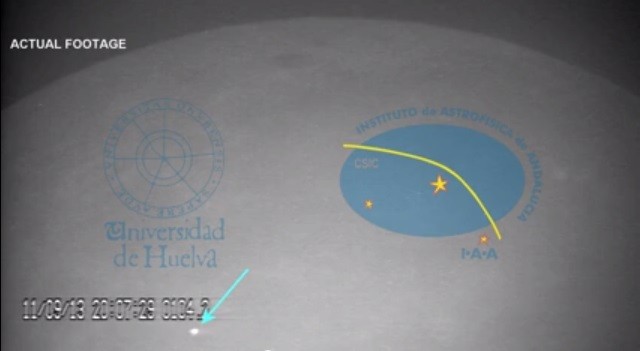
Astronomers at the University of Huelva, Spain have witnessed a record-breaking meteorite impact on the moon's surface.
Scientists have recorded a flash, from a meteorite colliding with the lunar surface which was so bright that it could have been seen through the naked eyes.
The collision was observed on 11 September 2013 with the Midas (Moon Impacts Detection and Analysis System) in Spain.
Prior to this, the largest lunar explosion had occurred in March 2013, when a rock of 40 kgs hit the moon's surface at a speed of 90,000 km/hour.
However, the meteorite that hit the moon's surface in September weighed about 400 kgs, and travelled at a speed of 61,000 kilometers per hour.
The 400kg meteorite was so fast that the earth turned molten and vaporized, thus creating a flash and a 40 m wide crater on the surface of the moon.
The flash was visible to the naked eye for anyone whow was staring at the moon at clear viewing conditions. Soon after the impact, an afterglow was seen that lasted another eight seconds, which turned out as the brightest and longest incident ever recorded.
The impact was equivalent to 15 tones of TNT, which is at least three times as that of the previous record, observed by NASA in March 2013.
"This is the largest, brightest impact we have ever observed on the Moon. Usually lunar impacts have a very short duration - just a fraction of a second. It was almost as bright as the Pole Star, which makes it the brightest impact event that we have recorded from Earth," Astronomer Jose Madiedo, who leads the Midas project at the University of Huelva told BBC News.
Unlike the Earth, the lunar surface is susceptible to meteoroid attack as the moon's surface lacks the protective atmospheric layer.
The Midas telescopes have the ability to spot impacts on the lunar surface because of the tiny flashes of light that are produced following the collisions. The moon's surface experiences rocky collisions almost every three hours. However, many of them are insignificant.
Check here for the video












